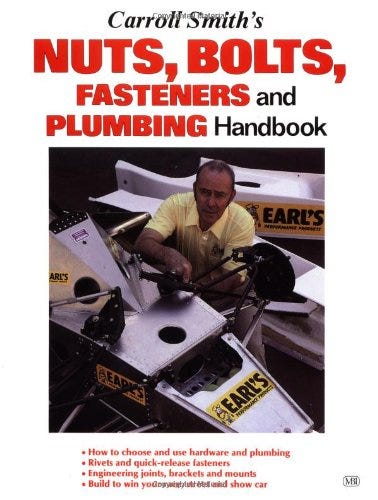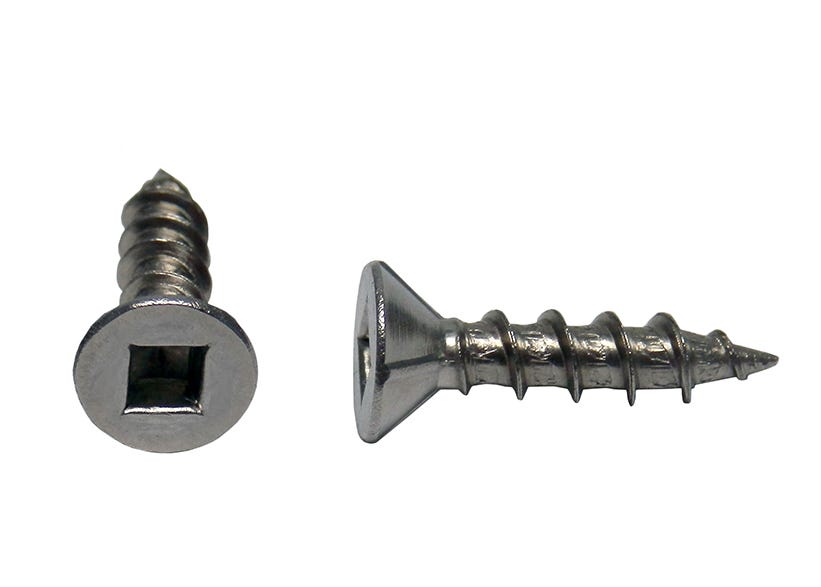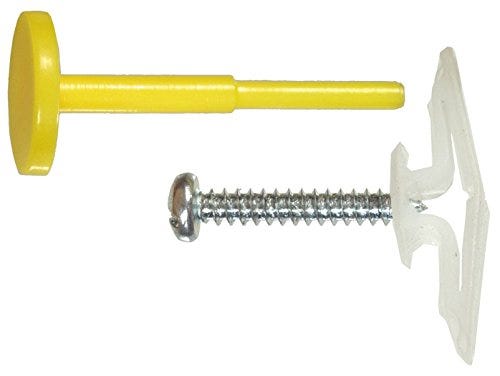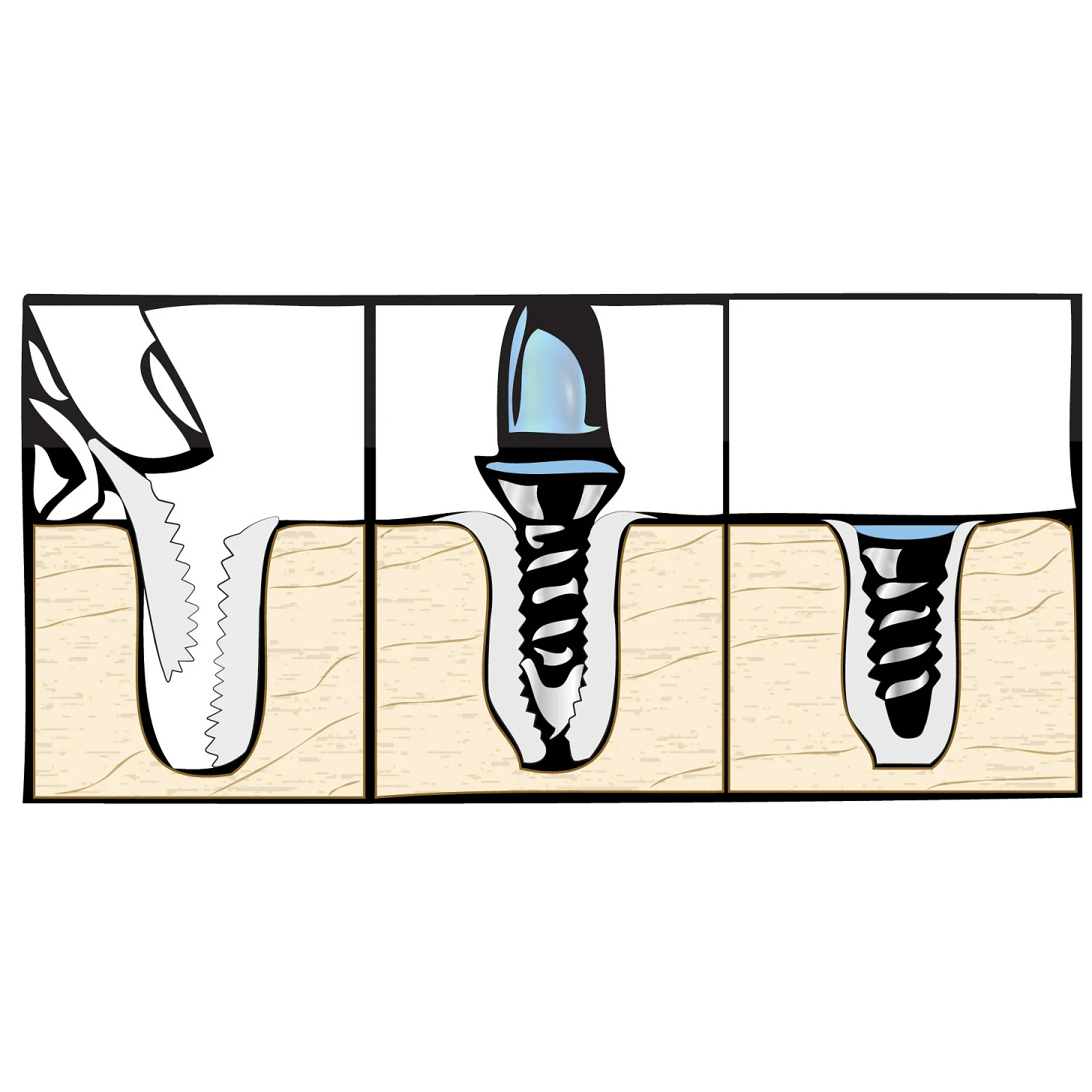Fasteners
Tools for Possibilities: issue no. 67
Once a week we’ll send out a page from Cool Tools: A Catalog of Possibilities. The tools might be outdated or obsolete, and the links to them may or may not work. We present these vintage recommendations as is because the possibilities they inspire are new. Sign up here to get Tools for Possibilities a week early in your inbox.

How to use fasteners
Carroll Smith’s Nuts, Bolts, Fastenersand Plumbing Handbook
The late Carroll Smith built race-cars. When it comes to high-performance fasteners, he’s the man. He explains how teensy little threads on a bolt can hold together several tons of speeding metal, and how they can fail. And why and how pop rivets work, or not. If you build anything that absolutely must not come apart, this is your reference. — KK
- All conventional rivets are grip length critical – the length of the rivet relative to the thickness of the work is almost a fixed dimension. The rule of thumb is that the length of the rivet under the head should be 0.9 to 1.4 times the thickness of the work. If the rivet is too short, there is not enough material to form a satisfactory blind side (shop-formed) head. If it is too long it won’t upset properly either, and will look messy to boot. The critical nature of rivet length combined with the various thicknesses of materials to be joined means stocking a bunch of different length rivets – which tends to be a pain.
The Avdell Corporation has a device called the Avex rivet, which neatly solves this problem. Some genius designed this rivet so that the upsetting process begins at the blind side work face rather than at the end of the rivet. The result is that one length of the rivet covers a wide range of work thicknesses. It is a relatively strong, efficient, good looking and convenient rivet. Purchased in lots of 1,000, it is also inexpensive (about three cents each for 1/8 in. diameter dome-headed rivets at the time of writing). I use nothing else for nonstructural applications. You will be amazed at how little time it takes to use up 1,000 rivets.

Best screws
If you do carpentry work, cabinet work, deck work, fence work, or whatever requires something to be connected to wood or concrete or brick, the square-drive screws from McFeely’s are incredible. The pay-off is that they have a wide selection in stainless (two grades) and other rust-proof finishes. Your hand or power screw-driver bit will never slip out of the slot. McFeely’s also has innovative ideas like self-drilling screws with a small augur built into the tip. I use two old Makita 9.6 volt drill-drivers, and it is no lie that I can drive fifty to sixty #10 by 3-inch augur tips into pressure treated wood on ONE charge.
Recently, I converted a basement into a one-bedroom apartment for a friend. I never drove one nail in the whole project. Outside of the dry-wall screws I bought at Home Depot, every piece of framing, trim, dropped ceiling and hardware is anchored with square-drive screws from McFeely. If I were ever to build another house, I would use their screws exclusively (they sell dry-wall screws, too).
Superior product and superior service (average three days between order and delivery via UPS Ground), plus they CALL you to advise of back-orders or any possible order changes. I have only a few companies I have dealt with over these years which have truly impressed me, I’ll rate McFeely’s right up at the top. I’ve never been disappointed with one of their products or their service.
Home Depot now carries some square-drive screws. But I started buying from McFeely’s 20 years ago since they offered stainless steel screws (very unique at that time). What McFeely’s has going for them is their immense variety of metal types of screws and bolts, including a superior galvanized steel finish, called “No-Co-Rode”. Four years of southern sun, gully-washer rains, snow and ice, and not the first “No-Co-Rode” screw I’ve used has rusted.
They have a lot of other “cool tools” on their web-site besides screws. Look at their “BITZ” holders that stick to a drill or their orange velcro straps that I have used for years to tie up my electrical cords. Generally very high-quality stuff at reasonable prices. — Jim Stagg
Square drive screws have been a trade secret among woodcrafters for years. They’ve just about replaced Phillips heads in Canada. Many manufacturers make them, although most hardware stores in the US don’t stock them (yet). But no one can match the variety of square drive screws from McFeely’s. They also sell screws with a “combo” drive which permit a Phillips driver to work in a pinch. Also the McFeely’s website has the best tutorial on screw types and materials I’ve seen, and a decent FAQ on why square drives are superior. — KK

High quality nails
A few years ago, on the advice of my roofer, I bought Maze stainless steel nails to hold the cedar shakes on my older home. I found the nails to be very well made and noted with approval that W. H. Maze Company has over a century and a half in the building products business. I recommended the brand to others and in the conversations that ensued, I found that they are best known for their cut nails for hardwood flooring and also for the hot-dipped galvanized nails that they pioneered.
Hot-dipped galvanized nails are steel nails that are dipped into molten zinc. The process creates an alloy on the outer layer of the nail that makes it incredibly resistant to corrosion. Another bonus is that all of the steel and zinc used in producing Maze Nails is sourced from recycled scrap metal that qualifies them as a LEED certified building material.
Like everyone else, I buy nails by the box, but use them one at a time. And a hammered nail is often a choice that you can’t undo. It only takes a few poorly-made nails to make you question the economy of your purchase. Once you find a brand that seems right, you will seek it out.
Maze has a good website that tells the whole story of the three U.S. mills that make a broad range of standard and specialty nails. The website has helpful information on nail selection and use. I was pleased to find that there is a dealer locator widget so I can get my fastener fix locally.
Be it ever so humble, a nail is a cool tool if you have the right one for the job. Maze Nails probably makes that nail. — Erik Hoover

Easy, secure hollow wall mounts
Over the years I have tried every type of wall anchor and toggle bolts on the market. The best product I have come across is the Toggler Hollow Wall Anchor. They are quick and easy to install and very strong. They work equally well in both drywall and plaster walls. These anchors are also translucent (many other anchors are color coded to designate size) which is nice if your object is small and doesn’t cover the anchor completely, such as a coat hook. You can get a sample kit from their website. — Scott Darley

Revitalize loose screws
I work in an independent hardware store that carries a plethora of interesting items that Home Depot and Lowes will not. This tool is by far my favorite doohicky. It provides you with a way to keep a stripped-out screw screwed in. Essentially Mr. Grips are little metal strips that are perforated much like the fine side of a cheese grater. If you cut off a strip as long as your screw, then fold it over like a taco, you can jam it down into the hole that has become stripped out. Simply run the screw back in next to the strip and, presto, the screw holds like new. Our bathroom door is held up with nothing but these. Works in metal, wood, and even cheap particle board. — Brad Thompson
01/1/24





